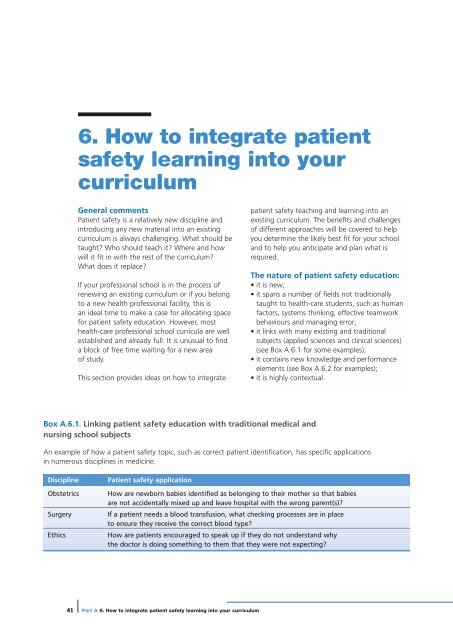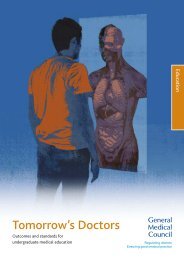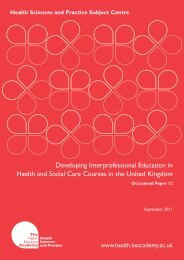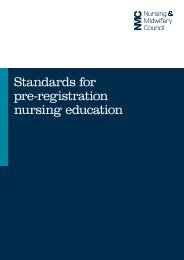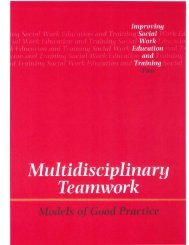(WHO) Patient Safety Curriculum Guide - CAIPE
(WHO) Patient Safety Curriculum Guide - CAIPE
(WHO) Patient Safety Curriculum Guide - CAIPE
Create successful ePaper yourself
Turn your PDF publications into a flip-book with our unique Google optimized e-Paper software.
6. How to integrate patient<br />
safety learning into your<br />
curriculum<br />
General comments<br />
<strong>Patient</strong> safety is a relatively new discipline and<br />
introducing any new material into an existing<br />
curriculum is always challenging. What should be<br />
taught? Who should teach it? Where and how<br />
will it fit in with the rest of the curriculum?<br />
What does it replace?<br />
If your professional school is in the process of<br />
renewing an existing curriculum or if you belong<br />
to a new health professional facility, this is<br />
an ideal time to make a case for allocating space<br />
for patient safety education. However, most<br />
health-care professional school curricula are well<br />
established and already full. It is unusual to find<br />
a block of free time waiting for a new area<br />
of study.<br />
This section provides ideas on how to integrate<br />
patient safety teaching and learning into an<br />
existing curriculum. The benefits and challenges<br />
of different approaches will be covered to help<br />
you determine the likely best fit for your school<br />
and to help you anticipate and plan what is<br />
required.<br />
The nature of patient safety education:<br />
ñ it is new;<br />
ñ it spans a number of fields not traditionally<br />
taught to health-care students, such as human<br />
factors, systems thinking, effective teamwork<br />
behaviours and managing error;<br />
ñ it links with many existing and traditional<br />
subjects (applied sciences and clinical sciences)<br />
(see Box A.6.1 for some examples);<br />
ñ it contains new knowledge and performance<br />
elements (see Box A.6.2 for examples);<br />
ñ it is highly contextual.<br />
Box A.6.1. Linking patient safety education with traditional medical and<br />
nursing school subjects<br />
An example of how a patient safety topic, such as correct patient identification, has specific applications<br />
in numerous disciplines in medicine.<br />
Discipline<br />
Obstetrics<br />
Surgery<br />
Ethics<br />
<strong>Patient</strong> safety application<br />
How are newborn babies identified as belonging to their mother so that babies<br />
are not accidentally mixed up and leave hospital with the wrong parent(s)?<br />
If a patient needs a blood transfusion, what checking processes are in place<br />
to ensure they receive the correct blood type?<br />
How are patients encouraged to speak up if they do not understand why<br />
the doctor is doing something to them that they were not expecting?<br />
41 Part A 6. How to integrate patient safety learning into your curriculum


